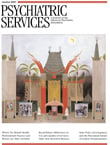The Physician as Patient: A Clinical Handbook for Mental Health Professionals
This handbook, co-authored by two of the leading psychoanalytic educators in North America, covers an important topic rarely addressed in the training of mental health care providers: providing treatment to the physician-patient. The text is divided into three sections—Physician Characteristics and Vulnerabilities; Diagnostic and Treatment Issues in the Distressed and Distressing Physician; and Prevention, General Treatment Principles, and Rehabilitation.
The entire book is an easy read and very well written. As would be expected from two master educators, each chapter includes several case examples that highlight key educational points. Chapters finish with a concise conclusion and bulleted key points. Virtually every chapter includes helpful tables that summarize facts presented in the text.
If the reader is seeking raw data related to physician-patients, he or she is advised to look elsewhere. The goal of this book is to provide insight into and a better understanding of the dynamic issues at play when physicians become patients. Its intended audience includes psychiatrists, primary care providers, addiction specialists, psychologists, clinical social workers, and psychiatric nurses. The content and writing style are appropriate for all of these groups of mental health providers. References are listed at the end of the book, making for an easier read, and cover 1957 to 2007. An appendix lists seven relevant Web sites and a brief description of their content.
Of the 12 chapters included in the text, the two I found most interesting were chapter 5 on addictions and chapter 11 on suicidal physicians. Both are important topics that do not receive the attention they deserve in most training programs. Both of these chapters are chockful of useful clinical pearls.
My only critique of this book would fall under the category of truth in advertising. The title should include "A Psychodynamic Perspective." Although chapter 9 provides a brief overview of cognitive-behavioral therapy, it is presented from a psychodynamic perspective. The entire book has a very strong psychodynamic influence—not a bad thing, and who better to give it than Dr. Myers and Dr. Gabbard? Its target audience should be trainees and early-career mental health providers.
To borrow from a local movie reviewer, I would give three stars out of four for a nicely written, clinically relevant, easy-to-read handbook full of useful clinical pearls.
The reviewer reports no competing interests.



